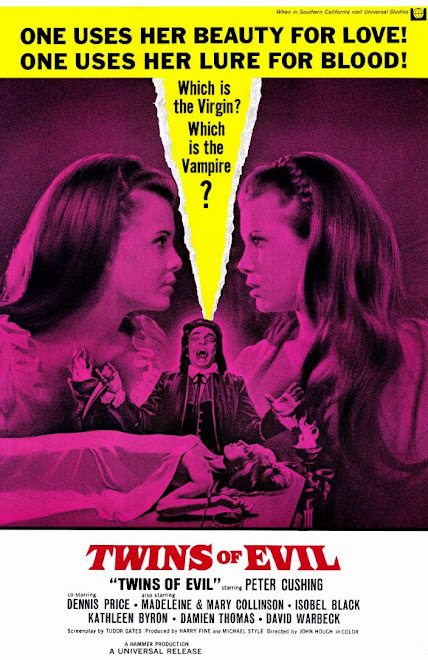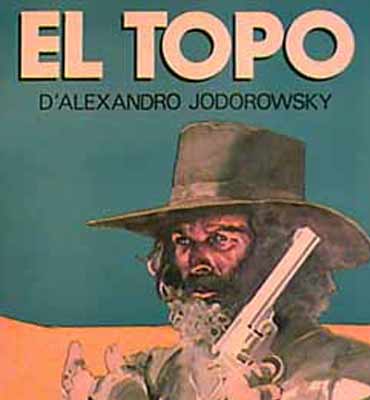
I have a feeling that despite his proclivity for writing some of the most unsettling horror literature of these troubled times, Jack Ketchum is a softy at heart. His characters often appear capable of anything (and in OFFSPRING, that includes eating babies), but his work ultimately suggests a desire to find an underlying sense of compassion in his fellow human beings. Take THE GIRL NEXT DOOR, a novel that has repulsed many readers with its near pornographic chronicle of a teenage girl's slow, torturous death. Complicit for having failed to act in the interest of this girl for much of the narrative, the narrator achieves a degree of retribution at the end when he finally acts out of love and decency. In his work, Ketchum often reminds us that even out of the most insanely violent, inhuman occurrences, we can find moments of transcendence and even beauty.
Perhaps it is this quality that has led contemporary film-makers to turn to Ketchum's novels as sources in their recent attempts to to recapture the elusive style of 1970s horror films, with THE LOST standing out as the most successful result thus far. I've read that a film adaptation of OFFSPRING has gone into limited distribution (go
here for the trailer and news), a choice that struck me as odd since that text is the sequel to Ketchum's notorious first novel, OFF SEASON. Some might argue that Ketchum essentially recycled the plot of the first novel for OFFSPRING: a family of barbaric cannibals living on the coast of Maine prey upon unsuspecting victims. In fact, OFFSPRING has received some unduly negative criticism based solely on its repetition of plot structure and events. However, a closer look reveals how Ketchum not only tightened the plot screws of the first novel, but he found different ways of exploring his favorite themes.
The very concept of family stands out as the most crucial of these themes. OFFSPRING offers us a variety of different families, most principally the broken Carey family, the relatively happy Halbard family, and the family of cannibals overseen by the character simply called "the Woman." The sole cannibal survivor of OFF SEASON, the Woman has managed to put together a new family through kidnapping and other nefarious methods, and she has now set her sights on snatching Melissa, the Halbard family baby, for an ill-conceived blood sacrifice of some sort. A subplot involves Steve Carey, a divorced father who has become intent on taking back his former wife, even if it means harming her and his son Luke, who is in her custody. Carey sets out to track down his ex-wife and son after he has savagely murdered his current lover. Said ex-wife and son have gone to visit the Halbard's in their isolated home at the same time the Woman has started her own family on a new cannibalistic spree, and she has her sights set on Melissa, the Halbard's new baby girl.
Of Steve Carey's warped desires, Ketchum writes, "His problem was to keep her somehow. To hold on to her. And by doing so, make them back into a family again." In this way, Ketchum draws uncomfortable associations between the "typical" American nuclear family and the family of cannibals overseen by the woman. Interestingly, Steve represents a patriarchal abuse of power, while the Woman rules the cannibal family as a matriarch. Both have the same goal: to re-structure their families in their own mad ways, no matter how violent the cost. In many ways, however, the Woman emerges as the more sympathetic family leader; her desire to spill Melissa's blood stems from the ghost of another infant she feels haunted by, a restless ghost who appears to need this sacrifice to feel at peace. Obviously, we want her to fail, but Ketchum still allows the parallels between the "civilized" and "uncivilized" to resonate long enough for us to examine the hidden sicknesses of the American nuclear family. Literary critic Linda J. Holland-Toll might label this kind of novel "disaffirmative" horror fiction. As she writes in AS AMERICAN AS MOM, BASEBALL, AND APPLE PIE, "disaffirmative horror is that fiction which does not supply a happy ending, however, qualified, and allow people to retain intact their basic assumptions about such value systems as those embedded in communities." In OFFSPRING, the family envisioned by the Woman is in many ways preferable to that envisioned by Steve Carey.
Whether the film will reinforce these themes remains for us to see; fortunately, Jack Ketchum has written the film's screenplay, which bodes very well. Count me as optimistic. You can check out the film's web page
here, but naturally, you should read the novel first, as well as OFF SEASON. Find them
here and
here.






































.jpg)





















